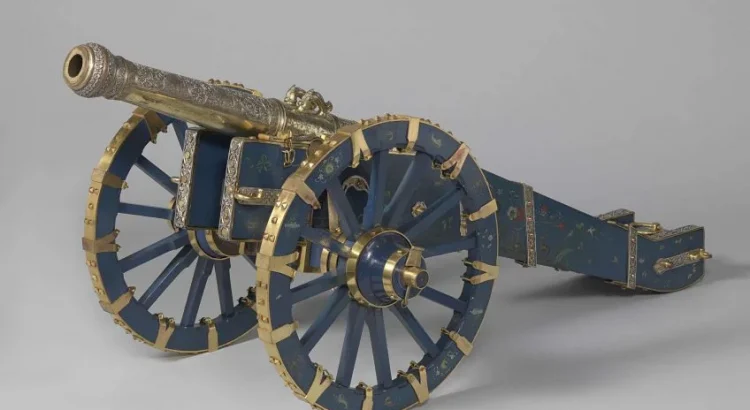Gold, silver and gems were all used for the decoration of the Cannon of Kandy. A beautiful cannon that’s being displayed by the Dutch Rijksmuseum. However the story behind the obtaining of the cannon isn’t quite as shiny as its looks are. The cannon was unjustly taken as war booty from Sri Lanka by Dutch colonists of the Vereenigde Oostindische Compagnie in short VOC (Dutch East India Company). The question if it will ever return to its old residence, the Palace of Kandy, remains discussed and unanswered.
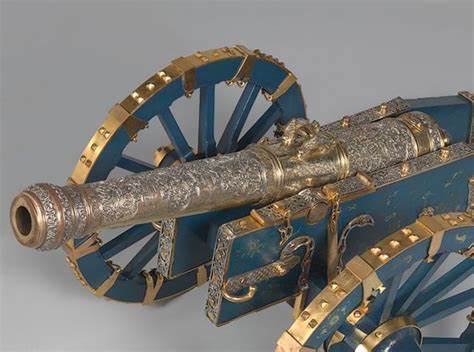
Exhibition ‘Nederland Overzee’
The eye-catching Cannon of Kandy consists of multiple materials including wood and bronze for the base, but also silver, gold and rubies for decoration. The lower half consists of wheels with gold embellishments and a blue frame on which the cannon, which looks to be entirely made of gold, rests. Depicted on the barrel is a coat of arms which shows a sun, crescent and a Sinhalese lion. These figures represent the Kandian power symbols. Despite it being easy on the eyes, the cannon also served a purpose, namely the welcoming of ambassadors and other visitors by firing salutes.
Ownership
The cannon’s country of origin is the island of Sri Lanka, better known as Ceylon under the Dutch colonisers since 1640. It stood in the Palace of Kandy and belonged to the monarch Raja Sinha II (1635-1687). The cannon is most likely made between 1660 and 1680 in The Dutch Republic. This is because it shares a lot of similarities with the Dutch bronze casters that were made around the same time. The finished product was then shipped to Sri Lanka by the VOC. If all this happened on request of Kandy or as a gift to Kandy remains an unresolved matter.
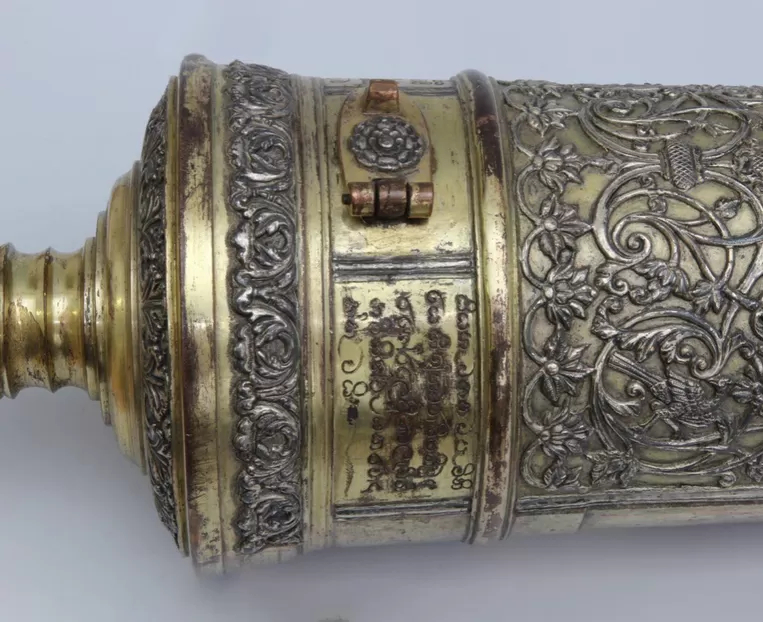
Over time decoration was added to the cannon. The exterior was altered around the year 1745 by the commission of the Disawa (provincial governor) Lewke who was an intermediary between Kandy and the VOC. The Sinhalese inscription on the cannon proves that Lewke was the contributor. For whom it was, is uncertain. Most likely it was fabricated for the monarch Sri Vijaya Rajasingha (1739-1747). Another possible recipient would be the Dutch. In this case it would have been the monarch that made the donation to the Dutch stadtholder William V. Until this day, no agreement about the subject has been met.
Travelling overseas
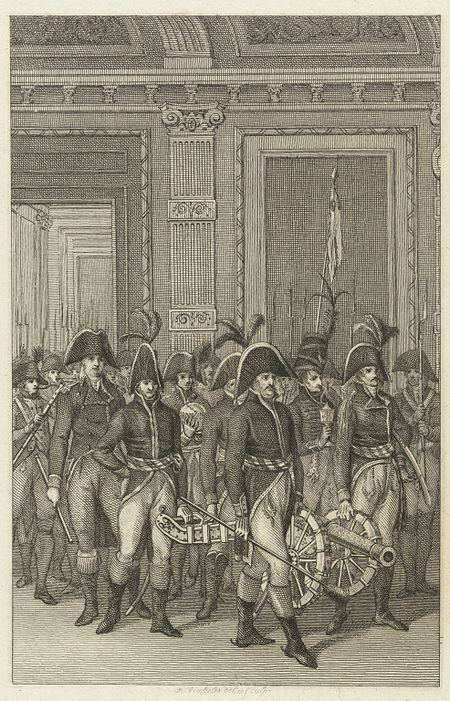
Sketch by draughtsman Dutch Renier Vinkeles (1741-1816)
Rijksmuseum, History
Oppression dominates the history of Sri Lanka. The island was occupied by the Portuguese until 1640 when the Dutch overcame them and settled there. The Netherlands would occupy Kandy from 1765 until 1796, after which Great Britain took over. The ongoing guerilla war made them decide to leave. While abandoning the island, they sacked the palace and temple and took The Cannon of Kandy as one of the spoils. It was again offered as a present, this time to the 31st Governor of Ceylon named Lubbert Jan van Eck. It was transported to Colombo where the board of the VOC was located and later on shipped to the Netherlands. In The Hague, in the Cabinet of Curiosities of stadtholder William V, the war trophy stood as a representation of the Netherlands colonial and military power.
Since its first location in the Netherlands in The Hague, the Cannon of Kandy moved several times. The French seized the cannon during their occupation of the Dutch Republic, but was restored afterwards. It resides in the Rijksmuseum in Amsterdam, which has been its home for almost a century. The cannon is displayed in an exhibition called ‘Nederland Overzee’ (The Netherlands over the sea). It informs mostly about the former Dutch colonies including Sri Lanka, Ceylon. The information sign describes that the cannon was violently taken during the plundering of The Palace of Kandy during the Kandyan-Dutch war (1760-1766). The sketch of the VOC-members carrying The Cannon of Kandy into the Staten-Generaal by Renier Vinkeles is also displayed.
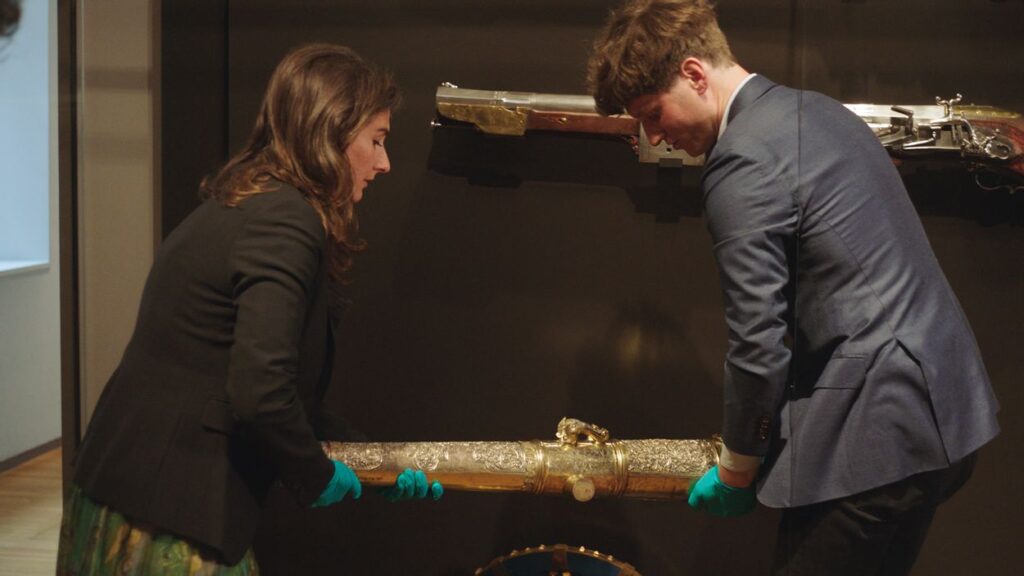
Showed in the Dutch series Roofkunst on BNNVARA, Episode 1
Why the cannon should return home
Being offered as a gift more than once, The Cannon of Kandy displays its high value. Despite the gold and gems, the cannon holds an even more precious value. Namely the possibility to be used, once again, as a gift. The gift of apology, for the exploits of The Netherlands against their former colony Sri Lanka. If no regrets are expressed by the Dutch, the Sri Lankans can’t forgive and get a peace of mind. The trauma will remain but an apology could ease the pain a little. A public and personal apolagy would also be beneficial for the Dutch. Coming to terms with the past and the horrors they performed could make the Dutch public more self aware and prevent history from repeating itself. Which proves to be a challenging matter, since racism and oppression still exist in the our world.
Since 1965 the people of Sri Lanka have requested its restitution several times. All of them rejected. In the early 2000 an origin research was initiated. The outcome didn’t change anything. Even though nothing indicates that The Cannon of Kandy is Dutch property, Sri Lanka can’t get it back unless they can prove on paper that it was theirs. Unfortunately no paper of the sort survived or ever existed. The Sri Lankans have made a replica of the cannon to present in their National Independence Memorial Museum. If the Dutch are so desperate in depicting how the histories of The Netherlands and Sri Lanka are intertwined, it seems only fair to change their original for the replica. Then finally The Cannon of Kandy can be transported back to its old and long promised home.
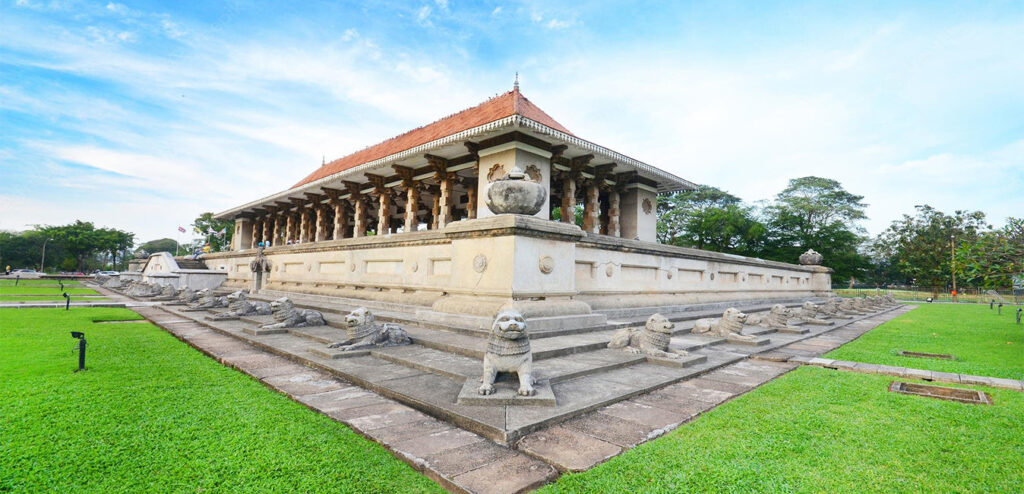
The Cannon of Kandy stands for both the history of Sri Lanka and that of The Netherlands. It can be linked to the colonial past of both the colonised and the coloniser. In knowing many places of residence, moving from one museum to the next, the cannon carries with it a dark past consisting of violence and exploitation. It experiences the post-colonial period. The Cannon of
Kandy is exposed to the headstrong Dutch,
who might never let it return to its home in Sri Lanka.
Want to learn more?
If your interest has been sparked you can click here for the Dutch series ‘Roofkunst’ on BNNVARA. There is a specific episode on The Cannon of Kandy but you can also explore and learn more about other looted art items.
Indy Boer
